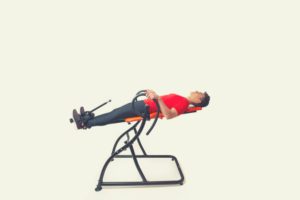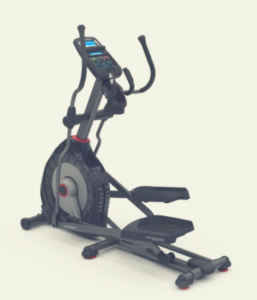Running, cycling, deadlifts, squats—the go-to recommendations for training routines often only tasks us to move linearly. Lateral movements are rarely involved despite the benefits and importance they offer.
Lateral Exercises: Do They Work?
Exercise remains one of the best activities that can extend our lives. The most common exercises all often have one thing in common. They ask us to move in a linear way.
Running, cycling, deadlifts, squats—the common recommendations for training routines often only tasks us to move linearly. Lateral movements are rarely involved despite the benefits and importance they offer.
Linear movement training is common because they are effective. But it does not make lateral movement training any less effective and important.
Ahead are the things you need to know about lateral movement training: its importance, benefits and ways to implement it in your daily training regiment.
What is Lateral Movement Training?
Lateral Movement Training are exercises that consist of primarily moving the body side-to-side or using it sideways.
Because of its nature this type of movement training occurs in the frontal plane of motion instead of the sagittal plane where you will see the most common exercises: running, walking, deadlifting, pressing etc.
What are the planes of motion?
We live and move in a three-dimensional world. Each and every of our activities can involve our bodies moving forward, backward, side-to-side, and/or rotation of itself.
Fitness lingo describes these types of movements to be happening in planes of motion. Each plane has different functions they govern and exercise to stimulate them.
These planes of motion are: the sagittal, frontal (or coronal), and transverse planes. To visualize them easier let us imagine each plane dividing the body to perpendicular segments.
The sagittal plane is responsible for the division of the body towards left to right.
The frontal (or coronal) plane is responsible for the division of the body from the back towards the front. This is the primary plane where lateral movement training occurs.
And the transverse plane for up and bottom halves of your body.
How does Lateral Movement Training utilize the planes of motion?
The frontal plane is the primary plane for Lateral Movement Training. It divides the body into back and front where these types of movement occur, running in parallel to the plane that divides it.
It includes movements such as: the separation and integration of a limb in relation to it’s midline (abduction & adduction), movement of the shoulder blades up and down (elevation & depression), and the movement of the foot inwards and outwards (eversion & inversion).
Reasons to do Lateral Movement Training
Now that you know what Lateral Movement Training is, how it occurs with your body ahead, you’ll be able to read why you need to incorporate it in your daily routine.
Lateral Movement Training reduce imbalances
Let’s face it, stumbling out of nowhere is unpleasant. Because our bodies have been conditioned to move linearly in the majority of our lives.
We stress the same linear-reliant muscle groups over time (think of the chest, hamstrings, calves while doing an activity like walking, push ups etc.), while the other support muscle groups stay underdeveloped.
This can create imbalances that can also lead to injury.
Lateral Movement Training reduces these imbalances by helping stabilize your hips and pelvis, helping your body get used to the frontal plane of motion by coordinating these body parts.
Lateral Movement Training reduces risk of injury
The imbalance that comes from the underdevelopment lateral movement training goes hand in hand with the risk of injury.
These muscle imbalances can cause the underdeveloped muscle group to degrade which only increases injury risk.
Lateral Movement Training develops muscle groups that support your joint rotation and movement, ensuring that your body is prepared for any lateral adjustments that come with our daily lives.
Lateral Movement Training makes you stronger
As stated earlier, lateral movement training helps stabilize your hips and pelvis, another result from this is that the muscle groups around that area get stimulated and trained upon doing this type of movement training.
The underutilized muscle groups get used to new types of stresses that are important in making them stronger as you progress. This increase provides you with more bounce and explosiveness as you try to change shift movements since twitch muscles are also involved.
Lateral Movement Training adds variety to your regiment
Many people do the same routine over and over. And while it yields effective results it has tendencies to lead you to boredom, or worse injuries.
The simple act of implementing lateral movement training offers a breath of fresh air to your routine.
This variety also enables the aforementioned reasons as it will be the one that enables the introduction of new stimuli, allowing underdeveloped muscle groups to get stronger that reduces imbalances which leads to the reduction of injury risk.
It gets your brain sparked and motivated, decreasing the chance of skipping and the previously mentioned boredom that leads to other potential worse things.
How can I incorporate Lateral Movement Training?
Now that we have established the importance and benefits that come with Lateral Movement Training, it is of equal importance for you to know how to actually incorporate them in your routine.
Because of its variety and accessibility, you can incorporate Lateral Movement Training in any phase of your routine (warm-up, the actual workout, and or the cooldown).
But experts recommend them for your warm-up phase to prepare the body for any and all the movements that your workout will demand.
It is recommended to combine both Lateral and Linear Movement Training to maximize the benefits. Here are some of the best movements to include in your routine you can do in any type of training space without requiring any equipment.
Jumping Jacks
Also known as star jumps, is a full-body workout that is an effective way to stimulate all the vital muscles in your buddy.
Suitable whether to you whether you are just a beginner or even experienced in exercising as it includes various low to high impact variations. If you’re just starting out or getting back into training here’s how to it:
- Get into the starting position with your feet together, along with your arms at rest on the side.
- Hop your feet apart while simultaneously bringing your arms together at the top of your head.
- After landing the hop, quickly again and bring your feet together while simultaneously bring your arms back to your side. This is 1 repetition. Repeat for the desired amount of time or repetitions.
Things to keep in mind while doing Jumping Jacks
- Try to make sure you do your jumping jacks on flat even surfaces to ensure both legs receive equal forces.
- Keep your core tight and engage to brace your body properly on each hop.
- Try to develop and maintain a breathing pattern to fully optimize the exercise and it’s cardiovascular benefits.
- And most importantly, listen to your body, take a rest if you feel something painful, lower or fasten the pace depending on if you find it too easy or difficult so you can avoid injuries but still push yourself.
Skaters
Skaters is a cardiovascular exercise like jumping jacks but this one gives more emphasis to the lower body, mainly the quads and glutes.
A great exercise not only to get your heart rate up but also improve your stability and reduce the imbalances we were talking about a while ago. Another exercise that doesn’t require you to have equipment, here’s how to do it:.
- Get into the starting position by leaning forward and tightening your core.
- Jump to your right bringing your left foot behind you while simultaneously bringing your left arm behind you.
- Jump to your left bringing your right foot behind you while simultaneously bringing your right arm behind you. This is 1 repetition. Repeat for the desired amount of time or repetitions.
Things to keep in mind while Skaters
- Keep your back flat and core engaged as possible to prevent imbalanced landings
- Put consistent power behind your jumps for explosiveness to get used in movement inside the frontal plane.
- To get more results either fasten the pace or deepening your lean to rely more on your core.
Lateral Lunge
Taking the pace down a notch we have the lateral lunge, also known as side lunges. An effective lower body exercises for the lower body.
Effective as a warm-up and cooldown, this exercise focuses on improving your stability by stretching your leg muscle groups. To do this exercise follow these steps:
- Get into the starting position by standing with your feet hip-width apart.
- Take a big step to the right, bending your right knee, hinge your hips back and lower the knee until it reaches the ground back in a 90 degrees angle
- Push the knee back toward the starting position.
- Do the previous steps to the other knee. This is one repetition. Repeat for the desired amount of time or repetitions.
Things to keep in mind while doing Lateral Lunges
- Keep your back straight, an arching back promotes ineffective form and can lead to injury.
- Keep both feet flat as you land on your lunges. This applies equal pressure on both knees instead of unequal distribution.
Lateral Plank Walk
Now we’re giving some love to the upper body with the Lateral Plank Walk. An exercise that works your whole body but primarily targets your core and arms.
A high reward movement that improves balance, coordination, strength and reduces injury. Here is how you do it:
- Get into a push-up form as the starting position.
- Step your right hand along with your right foot laterally.
- Follow it up with the other hand and foot in the same position you originally started. Keep “walking” until you reach a desired halfway point.
- Do the previous two steps with your left hand and foot. This is 1 repetition. Repeat for the desired amount of time or repetitions.
Things to keep in mind while doing Lateral Plank Walk
- Like with any plank, maintaining good plank position each stride by keeping your core tight and back straight and consistent. Not doing so will stress unnecessary muscle groups that are not required for the workout.
- Keep your knees from bending to fully optimize the benefits of the exercise in this muscle group.
Lateral High Knees
We have already established that our bodies are conditioned into movements in the sagittal plane, with walking as the most popular exercise with running not behind far behind.
Lateral high knees stimulates our knees to move in an an unusual way, making for a great exercise for the knees. Here’s how to do it:
- Get into the starting position by standing straight and arms at the side.
- Start running in place, lifting your knees up to the height of your waist. Do this while moving laterally into one direction until you reach a desired halfway point.
- Do this in the other direction. This is one repetition. Repeat for the desired amount of time or repetitions.
Things to keep in mind while doing Lateral High Knees
- Keep smooth and consistent breathing to fully optimize the cardiovascular benefits of the movement.
Final Thoughts
Everyone recognizes the benefits of exercise, however typically most of the routines only often involve linear involvement. It is important to involve lateral movement training in our routines as well.
Lateral Movement Training gives variety in our linear movement-filled daily lives by introducing new stimuli on our overlooked muscle groups involved in the frontal plane.
This results in a stronger body that is more balanced, and less prone to injuries ready for any movement along way.
The best thing about it is the versatility of being able to be done even little to no equipment, and being applicable to any and all phases of your workout.
The next time you do one, make sure you have this movement training so that you will be prepared towards all planes of motion.





